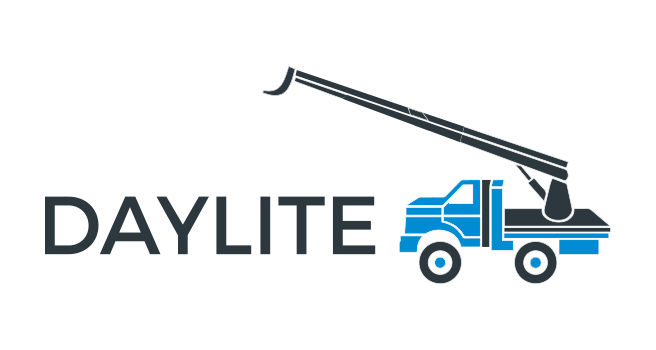Sep 3, 2018 | Blog
The latest trend in the lighting industry involves light emitting diodes, or LED’s. The advanced technology has real-life advantages for homeowners, renters, and business owners. With better durability and non-toxic materials, LED’s are safer and easier to use. With today’s updated technology, LED’s also provide better control over your lighting with dimmers and sensors. So how do you choose which LED lights are right for you? We’ve taken a closer look at the different types of LED lights so you can decide what’s best for your home, business, and lifestyle.
Different types of LED lights
Choose from various styles and designs for your LED’s. As LED technology improved, these lights became more accessible for home and business lighting solutions. And with long-lasting power, great energy savings, and better durability, you won’t want to miss out on these environmentally friendly lighting solutions.
- GU10
- Retrofit your halogen lamps with GU10 LED lights. These lamps fit halogen bases and produce quality light similar to halogens, but with lower heat and energy output. Lower your fire risk with GU10 LED’s. Many manufacturers make it easy to dim these lights to just the right level for your setting, so they’re great for home use or as display lighting for your highest quality products.
- GLS
- With the classic shape of an incandescent bulb, GLS LED’s are the perfect replacement for CFL’s and incandescent lights in your home. You’ll rarely replace these classic LED lightbulbs, and its easy to find them in either the warm white look of traditional incandescent bulbs or in cooler tones that mimic real daylight.
- Candle
- If you’ve been waiting to upgrade your chandelier or specialty light fixture, LED candle bulbs are the perfect option. Dim these lights to set just the right ambiance in your dining room. With clear or opaque casings, it’s easy to find the right option for your home.
- Golf balls and globes
- Available in many different sizes and styles, these decorative shapes are perfect for secondary lighting. Their soft glow produces the perfect lighting for table lamps, decorative fixtures, and many other domestic light sources.
- Reflector
- Make your home sparkle or get the shine of high quality jewelry stores for your merchandise with reflector lights. These LED’s have with a multifaceted reflector that highlights the surroundings with focused clarity. Create a top-quality look for your storefront or get the focused lighting you’ve always wanted for your kitchen with these LED lights.
LED lights vs. CFL’s and incandescent lights
Even if LED lights come in a style that’s right for you, it’s easy to wonder if they’re really worth it. We analyzed the pros and cons of LED lights, CFL’s, and incandescent lights to help you decide which is the best choice for you.
- LED Pros
- LED’s are the most energy-efficient bulbs on the market. Consume up to 90% less power and save on energy costs with these bulbs.
- Nothing beats an LED’s longevity. For every 10 CFL bulbs you replace, you’ll only replace one LED light.
- The superior durability of LED lights prevents problems caused by extreme temperatures, shock, and vibration.
- Non-toxic materials mean you never have to worry about throwing out your LED bulbs.
- LED Cons
- Traditional LED’s have a cooler light spectrum. Fortunately, newer warm white options and dimmers create a look closer to incandescent lighting.
- LED’s are the most expensive option, although long life helps to offset the cost.
- CFL Pros
- These lights are cheaper than LED’s.
- CFL’s are more efficient than incandescent lights, providing a middle option.
- CFL Cons
- These bulbs contain mercury. Those in rural areas rarely have access to proper disposal facilities.
- CFL’s lack the longevity, durability, and control of LED lights.
- Incandescent Pros
- These lights provide traditional, warm, yellow light.
- Incandescent lights are cheap to buy, but require frequent replacement.
- Incandescent Cons
- These lights use far more energy than CFL’s and LED’s.
- Limited longevity means you’ll constantly replace these bulbs.
- High energy use is harmful to the environment.
Potential issues with using LED’s
Most of the problems with LED’s involve choosing the right light for your setting, and retrofitting existing light fixtures for your LED’s. Fortunately, Day-Lite hires lighting experts to retrofit your lights without damaging the original fixture. These professionals offer great advice for getting the look and light coverage you need. If you’re not sure where to start to upgrade your home, our professional lighting consultants will help you every step of the way. Save money, time, and energy with LED lights.
Sep 3, 2018 | Blog
We all know how much our environment can affect our ability to get work done. From loud whispers to obnoxious pen clicking, our surroundings can quickly create diminishing returns to our productivity.
To maximize productivity levels in any office, it is necessary to take a look at the environment and atmosphere that is being created. A key element to constructing this type of environment is the lighting. While ideal lighting can come down to personal preference, in general, lighting affects our mood in similar ways. There is a relationship between lighting and productivity: cooler light makes workers more productive.
Cooler light consists of light sources that are closer to the violent and blue spectrum, whereas warm colors fall towards the yellow, red, and orange end. While natural light is the most ideal to boost mood, energy, and productivity- not all offices can supply their workers with an abundance of natural light. In this case, it is important to tailor the lighting in the office. Blue-enriched light in the workplace is correlated to an increase in performance. Levels of melatonin, which decreases our alertness, is lowered by this color light. By lowering melatonin levels, there’s automatic increase in our mental alertness. These blue-enriched lights also work to reduce sleepiness and fatigue.
Since this type of bright, blue-enriched light induces greater energy and alertness, you may want to consider warmer lights in rest areas for a more comfortable, relaxing ambiance.
Lighting is one of the most important factors in workplace productivity, yet it is often overlooked. Switching bulbs and investing in proper lighting throughout the office to optimize the workplace environment is necessary and will ultimately yield higher productivity levels among employees.
Sep 3, 2018 | Blog
Just two years ago your two best energy-efficient alternatives to the traditional incandescent bulb were either CFL (compact fluorescent light bulbs) or LED (light-emitting diode) bulbs. Both provided a more environmentally friendly and cost-effective substitute to the traditional bulb, which was in the process of getting phased out.
But now that it’s 2017, CFLs are about to get the boot as well. General Electric announced last year that by the end of 2016, they would stop manufacturing these bulbs- and in place, put their focus on LED lights.
CFLs have always been the inexpensive option between the two (CFL and LED) for anyone trying to be environmentally responsible. Why, then, would these affordable and eco-friendly bulbs be phased out?
To start with, CFLs had one main selling point that put it above LED bulbs- its price. Now, LED lights are no longer as expensive as they used to be. With its cost in the single digits, LED bulbs have taken over the role of the being both cost-effective and best performing.
Since its inception, CFLs have always had a fair share of drawbacks in comparison to LEDs. When it comes to quality, there’s no question that LED bulbs last much longer than both incandescent bulbs and CFLs. Since CFLs burn out quicker, they also need to be replaced more frequently. This comes as an inconvenience, especially because CFLs contain mercury in them. This isn’t an issue normally- until it breaks or has to be replaced. CFL bulbs have special disposal rules that apply, which make clean-up and replacement a bigger hassle.
Another major drawback of CFL bulbs is how sensitive it is to frequent on/off switching. Because it’s so affected by the switch, the lifetime of the bulb is drastically reduced. Couple that with it’s slow warm-up time, CFLs face issues that LED bulbs do not.
Beyond this, LEDs use about 75% less energy than incandescent bulbs whereas CFLs only use about 30% less energy than incandescent bulbs. While CFLs did qualify in the past, following the updated Energy Star standard, CFLs no longer meet the required minimum for any utility rebates. Under this new standard, consumers have a much greater incentive to go for the LED bulb.
Ultimately, LEDs have always been far superior to CFLs, but in the past they were not cost competitive. Now as the cost of an LED bulb continues to decrease and rival that of CFLs, the clear choice when replacing bulbs is to pick out LEDs.
Sep 3, 2018 | Blog
Picking the right commercial electrical contractor is an integral part of getting the job done well. Whether you’re looking to construct a new commercial building, renovate an existing one, or update the electrical work in your business, the process will always include finding a trustworthy electrical contracting company.
Here a few questions you should keep in mind when you begin your search for a commercial electrical contractor.
1) What exactly do I need done?
Are you renovating your office building? Do you need some wires or lighting repaired? By defining what exactly you need done you’ll be able to plan your time and budget constraints. From there, you’ll be able to find the commercial electrical contractor that can meet these requirements.
2) Do they have all the necessary credentials?
When starting a new project, you’ll want to be able to trust that whatever commercial electrical contracting company you use, has all the required licenses and insurances. At Day-Lite each of our electricians are C10 certified. You can verify the licenses of all contractors with the DCCA. We always recommend asking the contractor for references to their previous clients if they’ve ever done a similar job in the past- it’s the best way to make sure they’re credible.
Sep 3, 2018 | Blog
After a rough 2014 for the lighting and LED industry, 2015 is looking bright. Consumers at CES got a glimpse of what this years brings. Here are a few of the newest lighting products the industry can’t stop talking about.
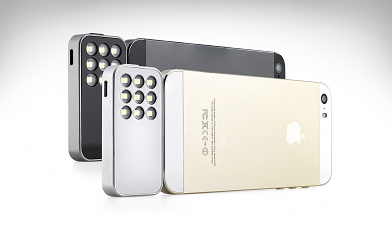
Knog Expose Smart
While your iPhone’s camera keeps improving, it will still probably come up short if you try to take a picture without enough daylight. The Knog Expose Smart will solve that problem. It is a nine LED iPhone flash, that gives you 120 lumens of power to illuminate stills and videos you shoot in low light or in the dark. Get the perfect light for your next selfie.
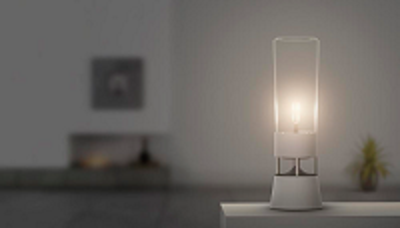
Sony Symphonic Light Speaker
The Sony Symphonic Light is a bedside lamp that can be hung from the ceiling to add to a consumers living room decor, but also has the bonus of being able to play music. It can provide the crisp and clear sound of a simple, vocal-based song, as well as the bass and power loud enough to deliver the ambient audio of a crowded party. Sony’s Symphony Light Speaker is the classiest speaker you’ve ever seen.
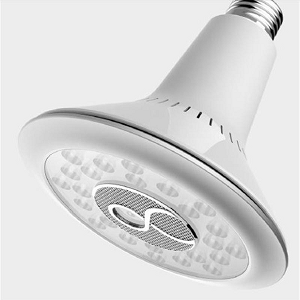
Sengled Snap
The Sengled Snap comes equipped with speakers, a microphone, and motion sensors, and it streams video to smart devices. Its facial recognition feature can let consumers know when there’s a stranger on the porch or when kids enter or leave the vicinity of his or her house. The bulbs are designed to work with your existing infrastructure, fitting for any household.
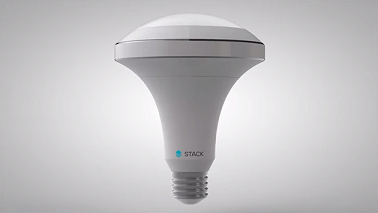
Stack’s Alba
Stack’s Alba bulbs are the only light bulbs that can automatically adjust to both occupancy and natural light, ultimately lowering the amount of bulbs needed in a household. Each bulb includes embedded sensors and micro-controllers so it can “respond” to its respective environment, such as dimming during the daylight. Alba is turning households into energy-savers one light bulb at at time.
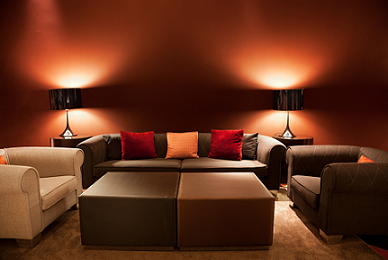
TCP’s ColorSpree Bulbs
TCP’s ColorSpree Bulbs include A-lamp LED bulbs that can transform to any color in the RGB spectrum. ColorSpree technology incorporates color-changing LED bulbs that are programmable to music, syncing with the rhythm of any song. Consumers can use their bluetooth connection to adjust the color temperature or dim the bulbs. As technology continues to advance, we believe that lighting should get smarter too.
Sep 3, 2018 | Blog
Neon Sign Repair is Vital for Business Growth
Having the right signage can either draw or take away business from you. A well maintained,lit, designed neon or LED sign draws customers to your business. A poorly lit, placed, and forgotten sign will draw business away. Studies have shown when a business neon sign is carefully designed and maintained, the need for other forms of advertising is greatly reduced, according to the Small Business Association. That’s why so many companies are choosing a lighting maintenance company to take care of all of their neon sign repair and maintenance needs.
Boosts Sales
Your neon sign is equivalent to hiring a street promoter without having to pay them. Your sign informs passerby’s of your product or service and more than any other form of advertising, a business sign has the best return on investment according to a study that was conducted by the University of San Diego School of Business Administration. During this study they found a business and repaired their sign. They made sure the sign was visible from the street, that it was new, and well lit. During a one week period 10 customers visited the business stating they found it from the sign. In turn, 6 out of those ten customers made a purchase.
Design and Message
If your company’s neon sign can be seen, it will drive traffic to your business and will result in a boost in your bottom line. Your sign must be bold and well lit so it can be seen from a distance. You can easily turn off a potential customer by having a sign that has too much detail as this will confuse them. Signs must be memorable and consistent with your brand. Make sure that your logo and color scheme are consistent with your neon or led sign. Your sign must also be well-lit and visible after dark. Your sign is your best advertisement morning, noon and night, so make sure that you have someone that can consistently maintain it.
Regulations and Permits
As with most things business related, there are many regulations and permits that are required with any lighted signage for your business. There are new California state laws that passed that are geared towards reducing energy waste. One of them contains a requirement that electrical energy use in neon, LED and florecent signs must be significantly reduced by 25% to 50%. This new law will slowly put an end to neon lighting and will put a start to LED signage.
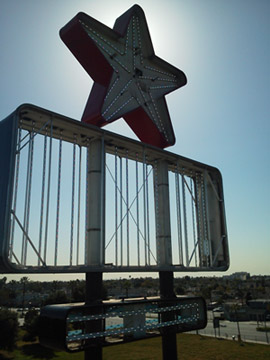
Sign repair is one of the hallmarks of Day-Lite, and as shown above, it’s an added potential for increased profit for your tenants and centers.
From lighted fluorescent pylon signs to channel letter neon signs, Day-Lite will ensures your sign is bright and visible.
We offer various service options to assist you with your outdoor signage needs including energy efficient options for neon and most fluorescent applications.
